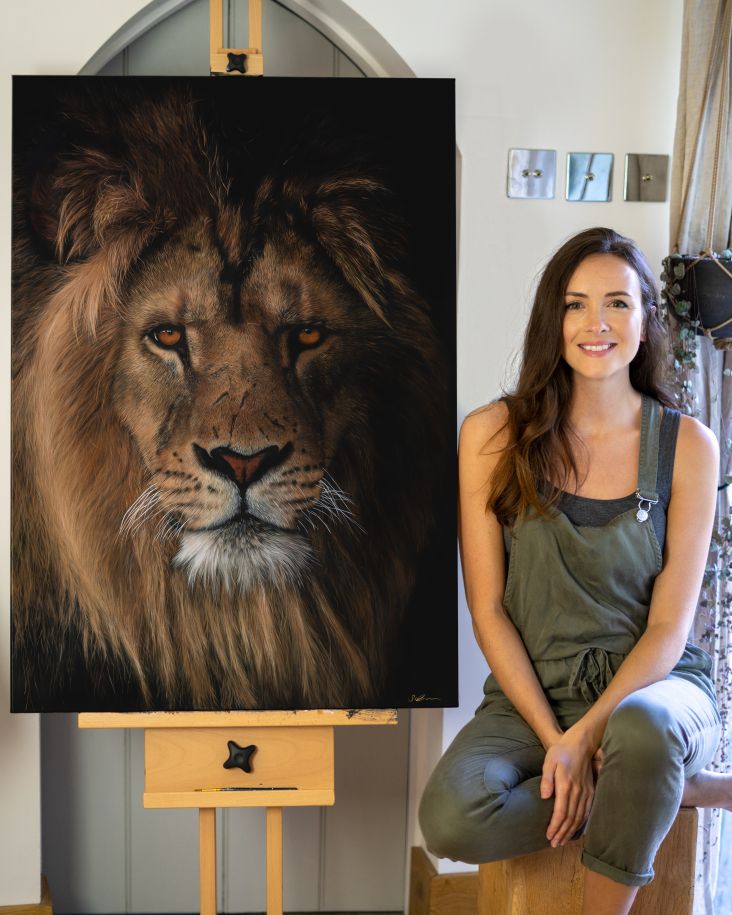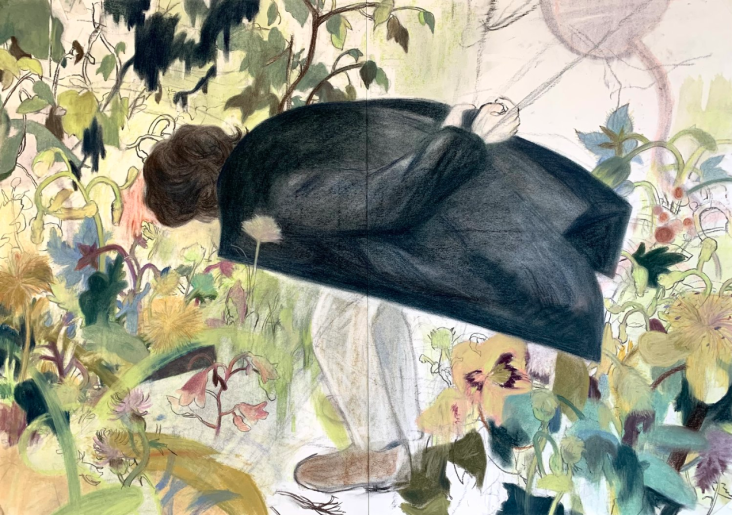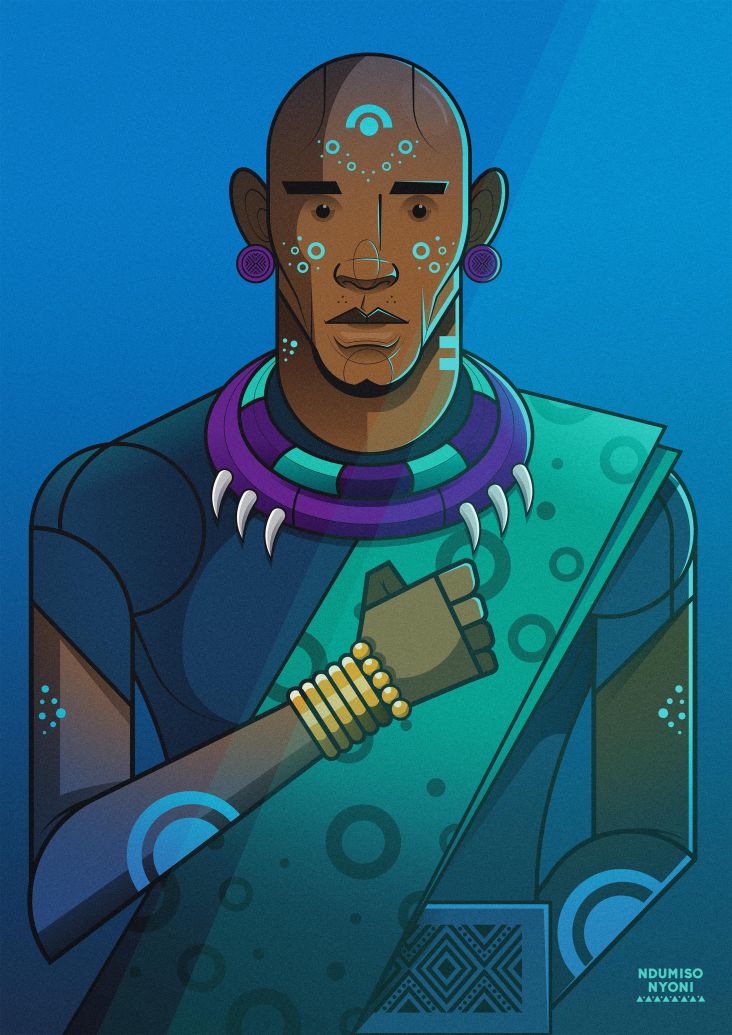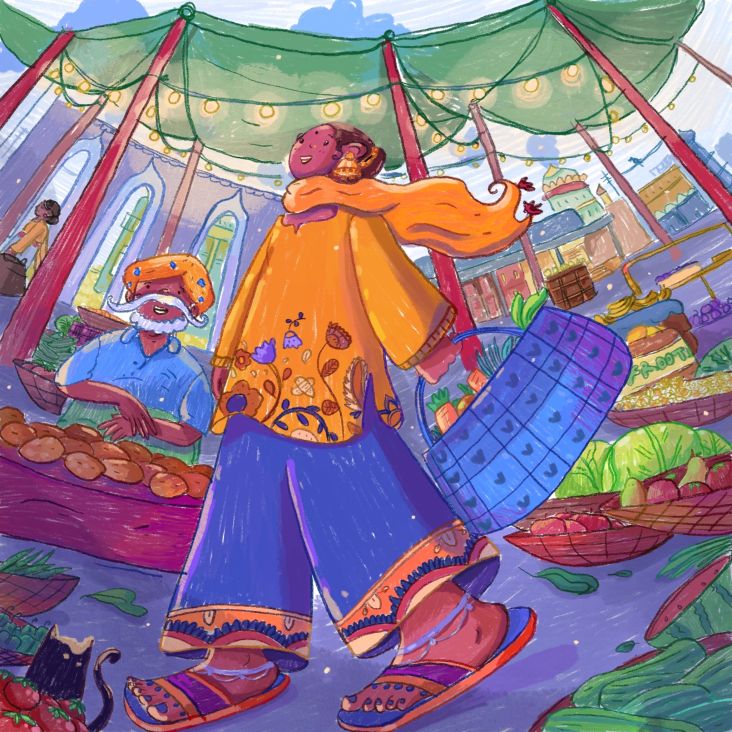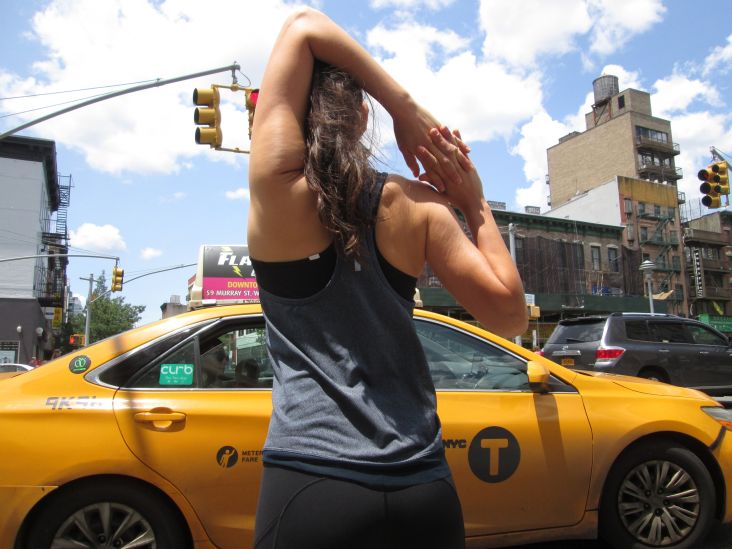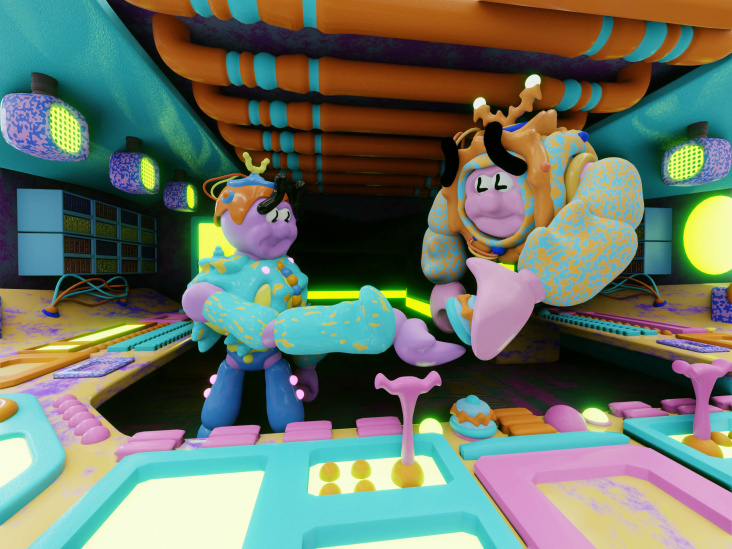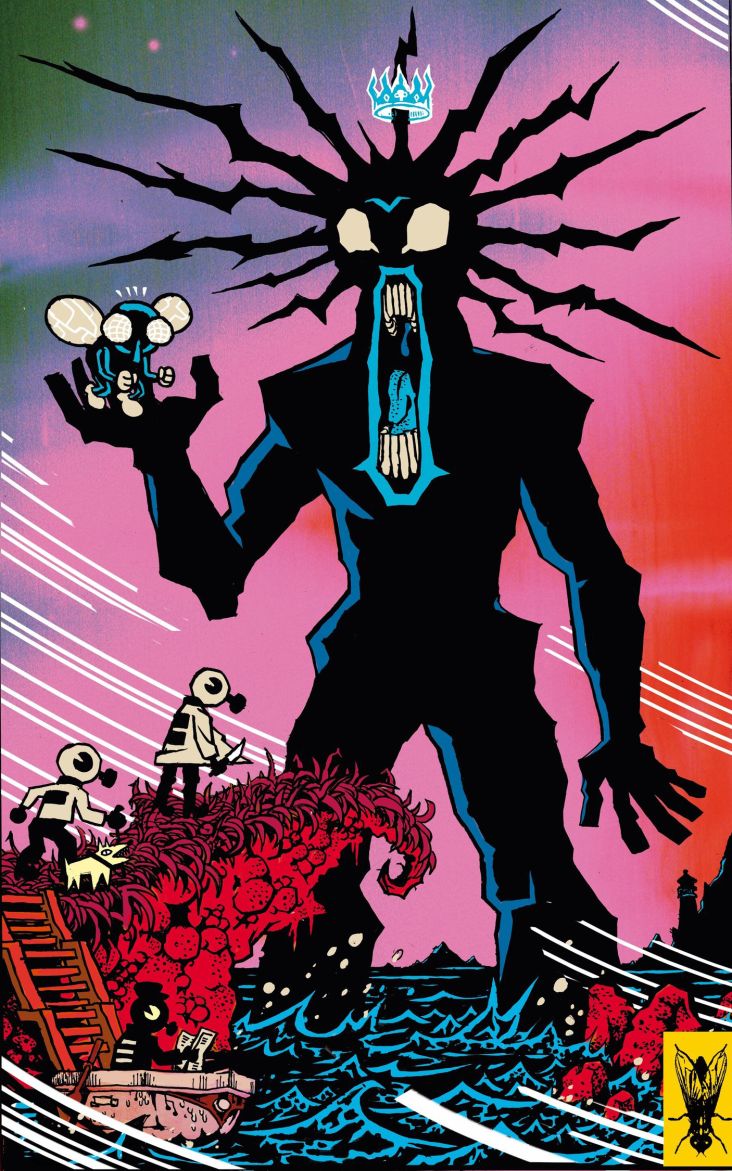Dear Earth: Artworks to inspire collective action, and promote care for our planet
Dear Earth: Art and Hope in a Time of Crisis is an ongoing group show at the Hayward Gallery this summer – and it's one of many activities getting us to freshly-look at climate change. Assistant curator Marie-Charlotte Carrier shares why the gallery prioritises art that considers how humans can care for and connect to nature.
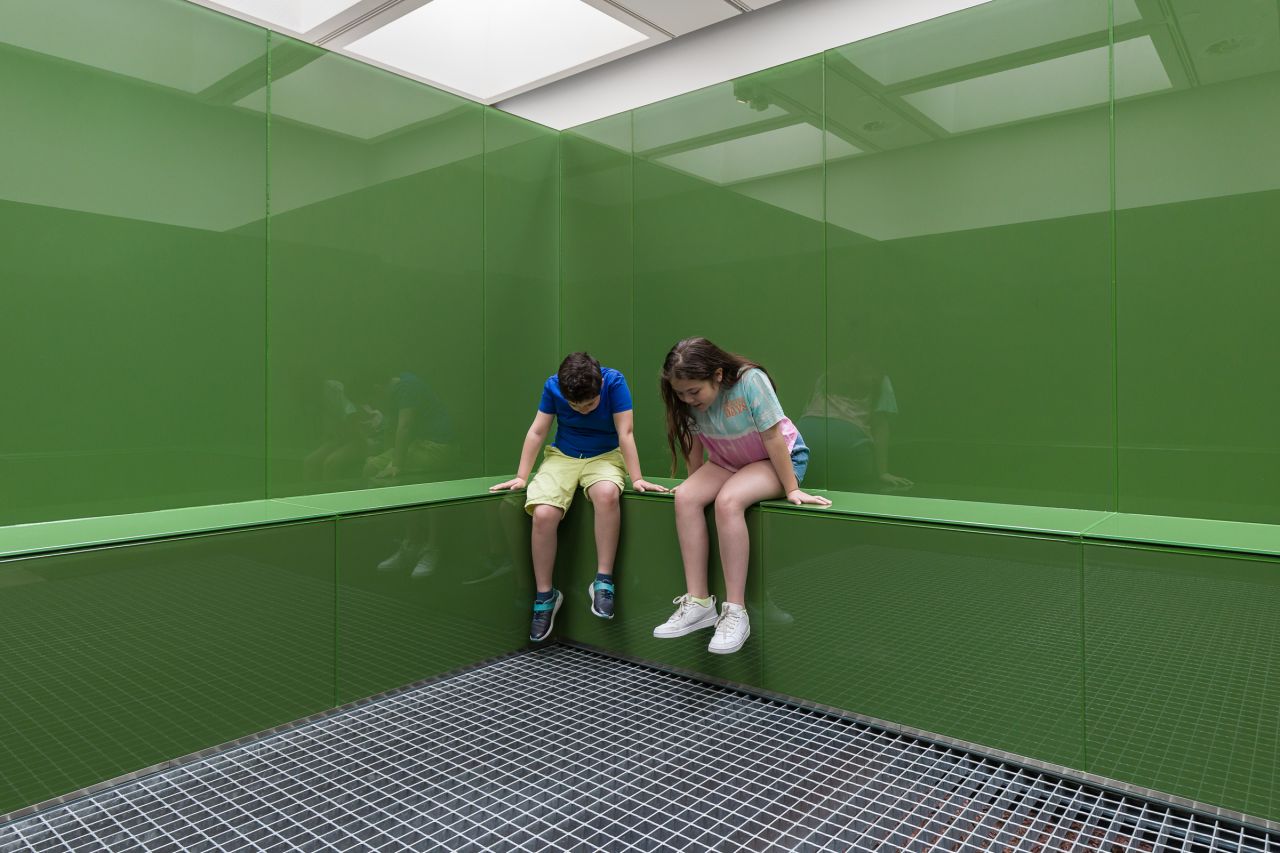
Installation view of Cristina Iglesias, Dear Earth – Art and Hope in a Time of Crisis. Photo: Mark Blower. Courtesy the Hayward Gallery
"The climate crisis is considered one of the most urgent issues of our time," says Marie-Charlotte Carrier, assistant curator of the Hayward Gallery's exhibition, Dear Earth: Art and Hope in a Time of Crisis, on until September. "Naturally, it inspired this showcase."
The exhibition positions art as a vehicle to provoke positive change. While the exhibition itself can't – and doesn't – provide solutions to the climate crisis, its presentation highlights the necessity for an interdisciplinary and collaborative approach, particularly with matters related to the environment.
Featuring 15 artists from around the world, united through their practice of examining the relationship between humans and nature, the collection presents feminist perspectives, varying mediums and diverse focuses, making for a multi-faceted and interactive show.
Combining video installations, textile sculptures, living plants, seed-grown portraits, running water and more, the exhibition suits children and adults alike. It aims to reawaken an innate connection to the environment within each visitor.
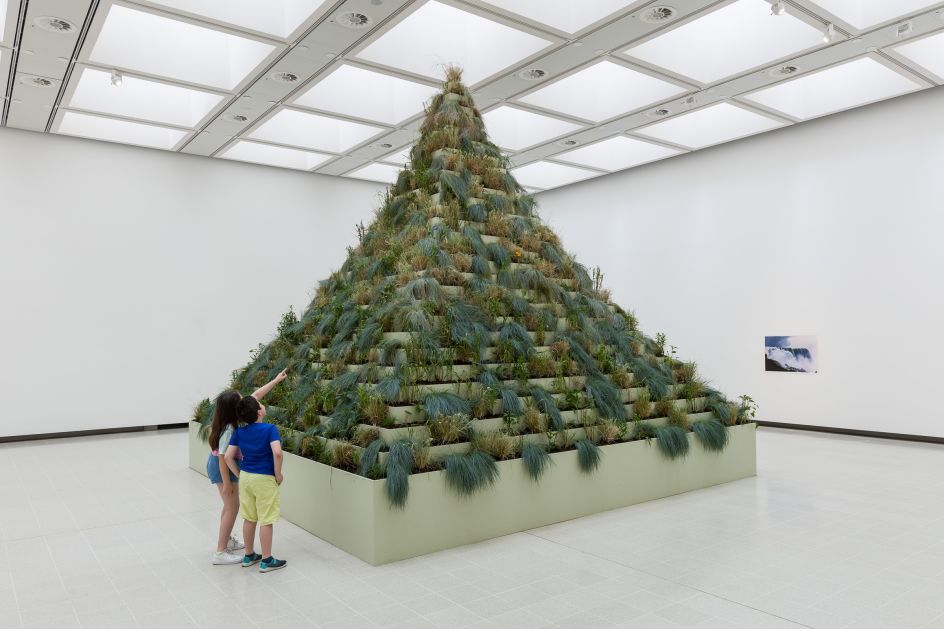
Installation view of Agnes Denes, Dear Earth – Art and Hope in a Time of Crisis. Photo: Mark Blower. Courtesy the Hayward Gallery
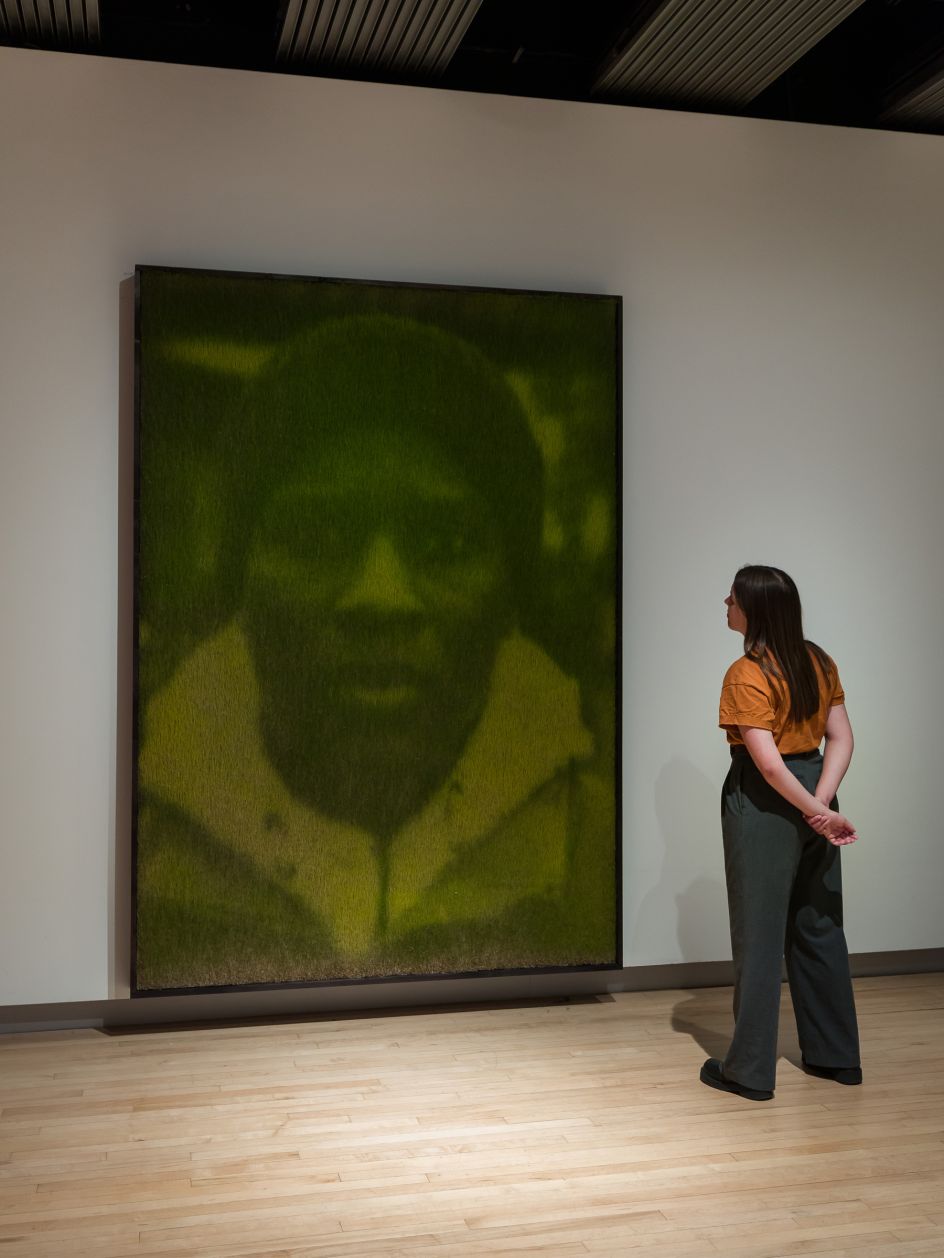
Installation view of Ackroyd, Harvey, Dear Earth – Art and Hope in a Time of Crisis. Photo: Mark Blower. Courtesy the Hayward Gallery
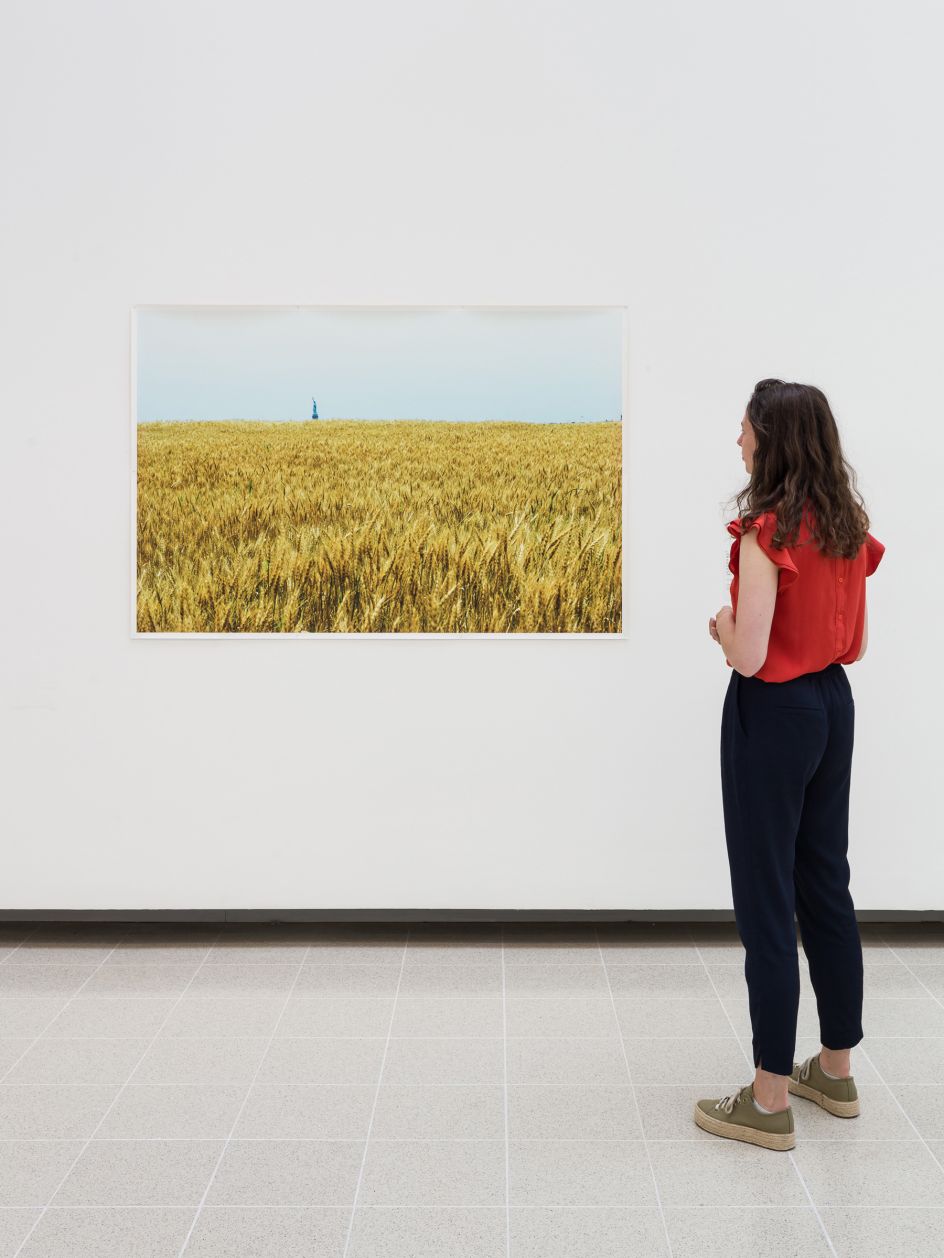
Installation view of Agnes Denes, Dear Earth – Art and Hope in a Time of Crisis. Photo: Mark Blower. Courtesy the Hayward Gallery
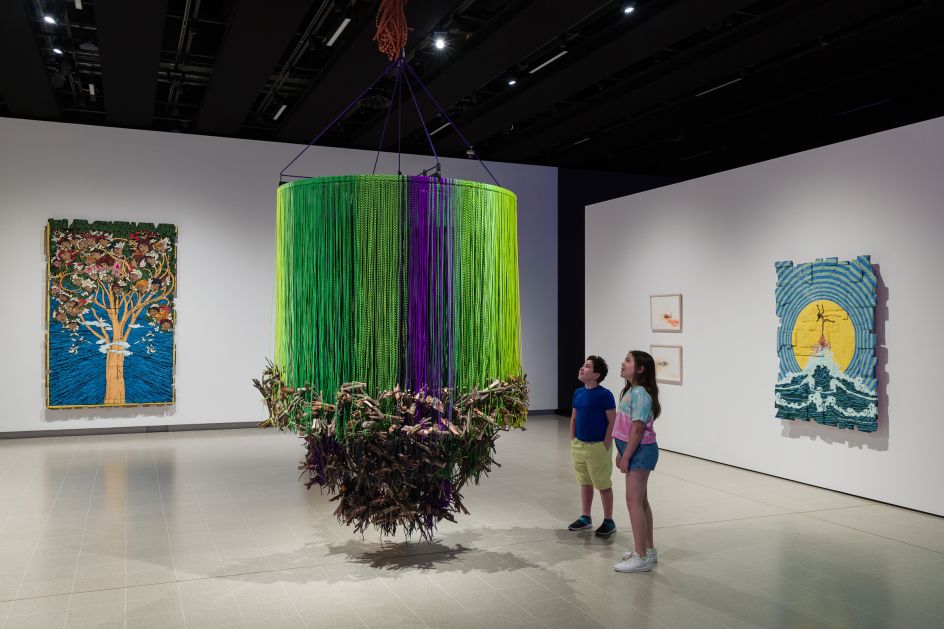
Installation view of Andrea Bowers, Dear Earth – Art and Hope in a Time of Crisis. Photo: Mark Blower. Courtesy the Hayward Gallery
The artists include British visual artists Ackroyd & Harvey, American ecofeminist artist Andrea Bowers, American artivist Imani Jacqueline Brown, Hungarian-American conceptual artist Agnes Denes, Irish multi-disciplinary artist John Gerrard, Spanish installation artist Cristina Iglesias, Australian sculptor Aluaiy Kaumakan, American ecological artist Jenny Kendler, Irish photographer Richard Mosse, Nigerian visual artist Otobong Nkanga, British contemporary artist Cornelia Parker, Indian-British interdisciplinary artist Himali Singh Soin, German filmmaker Hito Steyerl, Brazilian indigenous artist Daiara Tukano and British horticulturalists Grounded Ecotherapy.
Of this selection, Carrier says: "We wanted to work with artists whose works inspire change by establishing a stronger emotional connection to the Earth. By focusing on optimism to motivate people to act, the exhibition seeks to instil hope and care for the planet."
The exhibition opens with Nkanga's words, 'Caring is a form of resistance', and it proceeds to reveal how each artist weaves activism into their work while encouraging more care around how humans treat nature.
Fantastically curated, visitors are taken on a journey – traversing the swamps of Louisiana and the depleted and degraded Amazonian rainforest, passing a collapsed mine in Namibia, and experiencing the icy expanses of the Arctic. Dear Earth draws out a playful yet provocative reaction from attendees, providing sensory experiences alongside factual details to get audiences to participate in the show.
Kendler's featured installation, Birds Watching III, takes guests outside onto the gallery's balcony that overlooks London's cityscape, contrasting this view with the magic and reality of birds on the cusp of extinction. While Mosse's film, commissioned for the exhibition no less, is a plea from the Yanomami indigenous people of the Amazonian rainforest, asking the international community to lend their support.
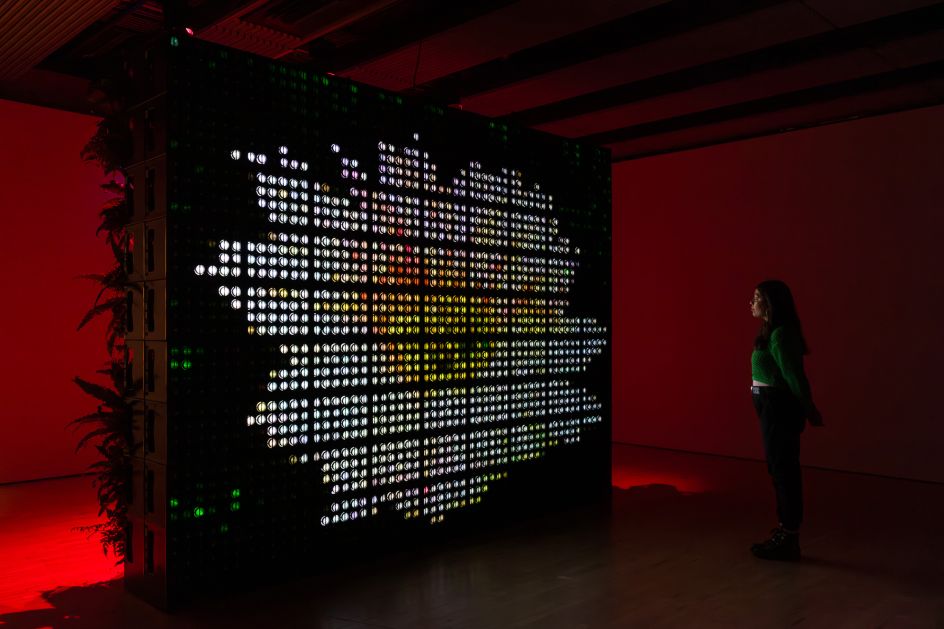
Installation view of Hito Steyerl, Dear Earth – Art and Hope in a Time of Crisis. Photo: Mark Blower. Courtesy the Hayward Gallery
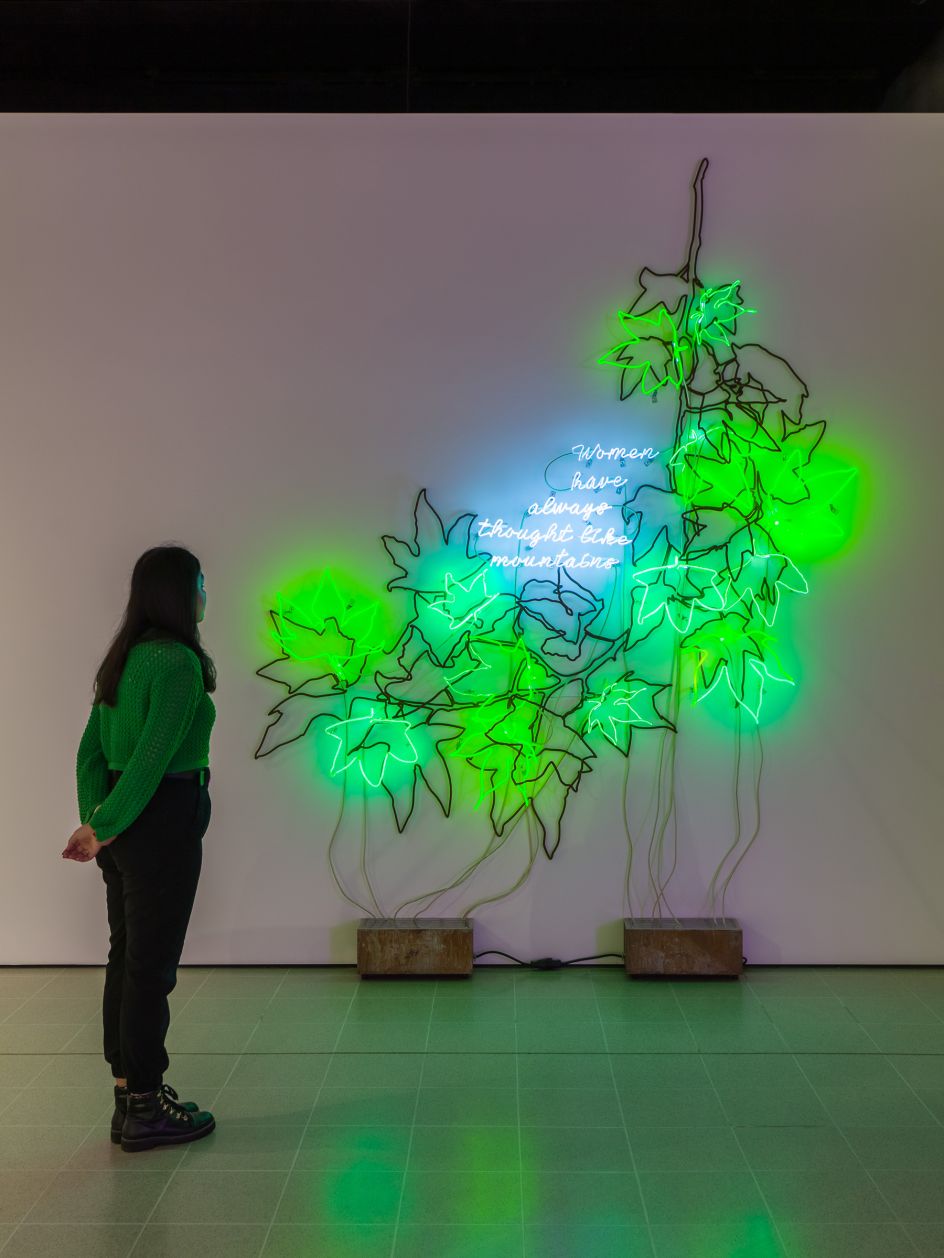
Installation view of Andrea Bowers, Dear Earth – Art and Hope in a Time of Crisis. Photo: Mark Blower. Courtesy the Hayward Gallery
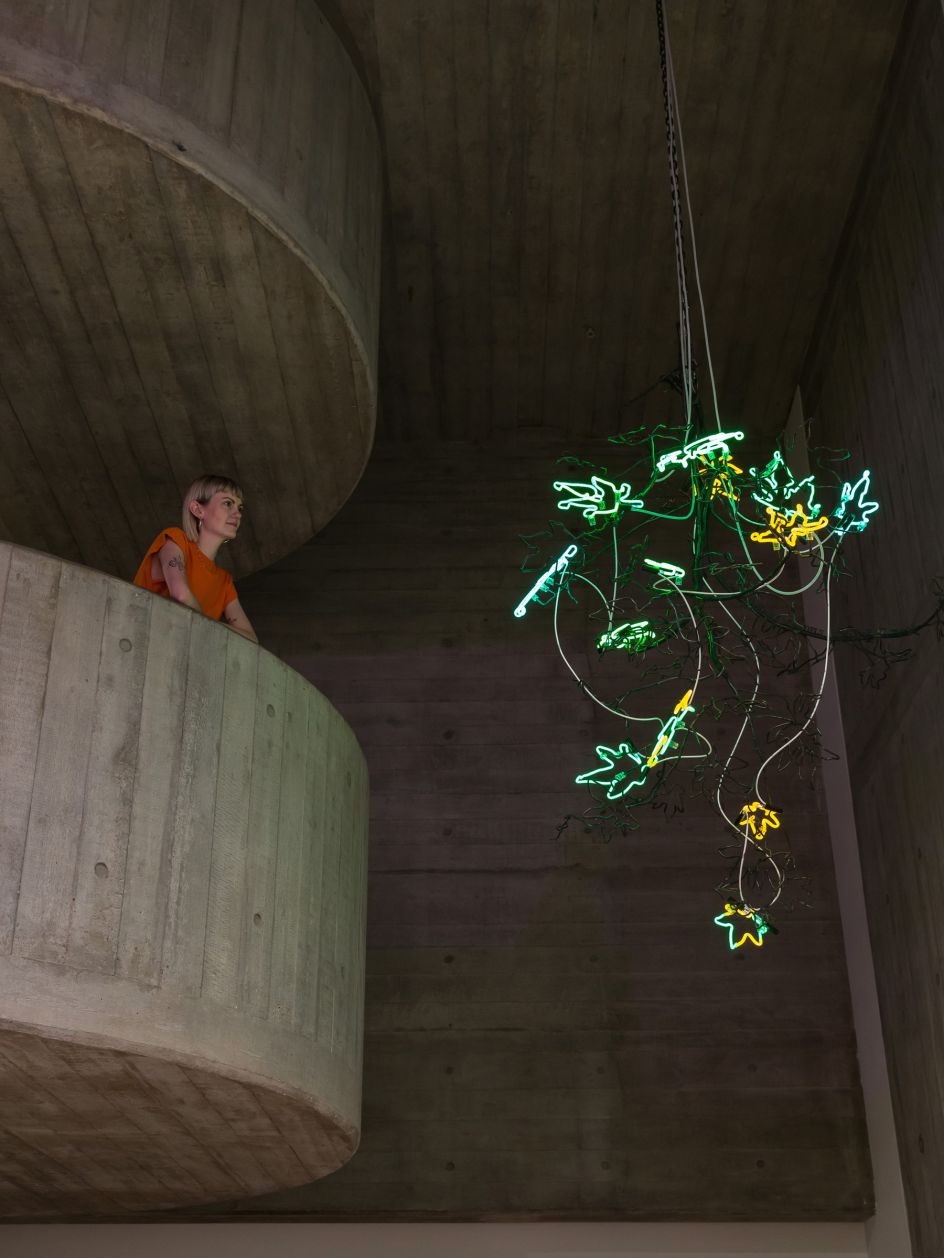
Installation view of Andrea Bowers, Dear Earth – Art and Hope in a Time of Crisis. Photo: Mark Blower. Courtesy the Hayward Gallery
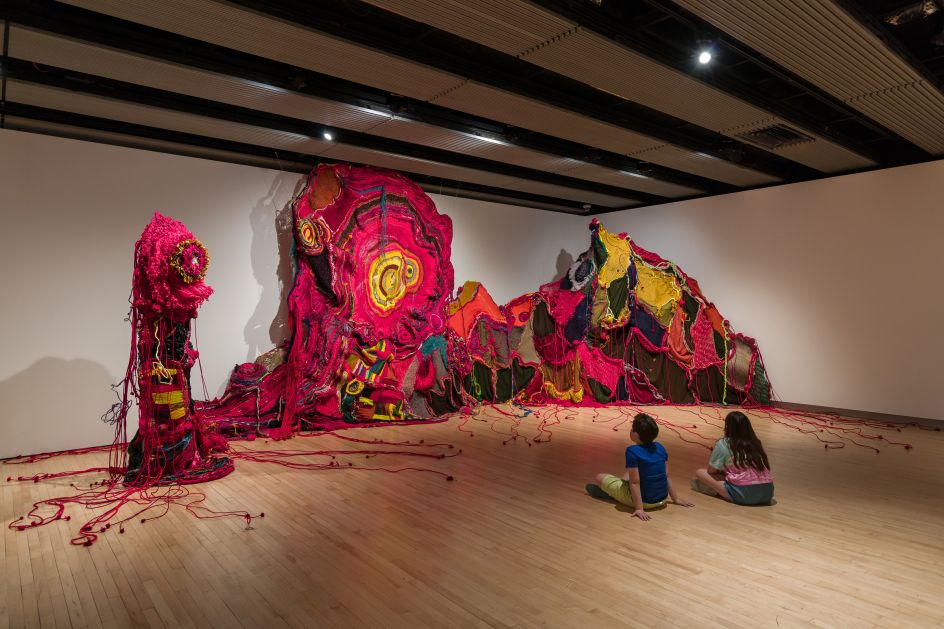
Installation view of Aluaiy Kaumakan, Dear Earth – Art and Hope in a Time of Crisis. Photo: Mark Blower. Courtesy the Hayward Gallery
But there are also positive reminders of the work of activists and the soothing power of nature on display – Ackroyd & Harvey has grown seedling portraits of London's activists; Iglesias has recreated a babbling stream within the gallery; Parker's docu short THE FUTURE (Sixes and Sevens) observes schoolchildren innocently imagining their future and discussing issues related to the climate; while Denes presents a five metre-tall pyramid of living plants proving that art can do more than just initiate social commentary, it's actually alive.
"Art has a unique ability to evoke emotions, create connections, and inspire action," says Carrier. "Artists can communicate complex ideas and evoke strong emotional responses through their work. Art goes beyond words, enabling artists to express the urgency of the climate crisis in ways that traditional methods may struggle to achieve. By using art to explore and respond to the crisis, the exhibition aims to connect with the audience on a deeper, more personal level, encouraging reflection and motivating people to take positive action for the environment."
The exhibition's title, chosen to evoke a direct and caring address between humans and the planet, "emphasises the importance of acknowledging our responsibility towards the environment and fostering a sense of care and compassion for it," says Carrier.
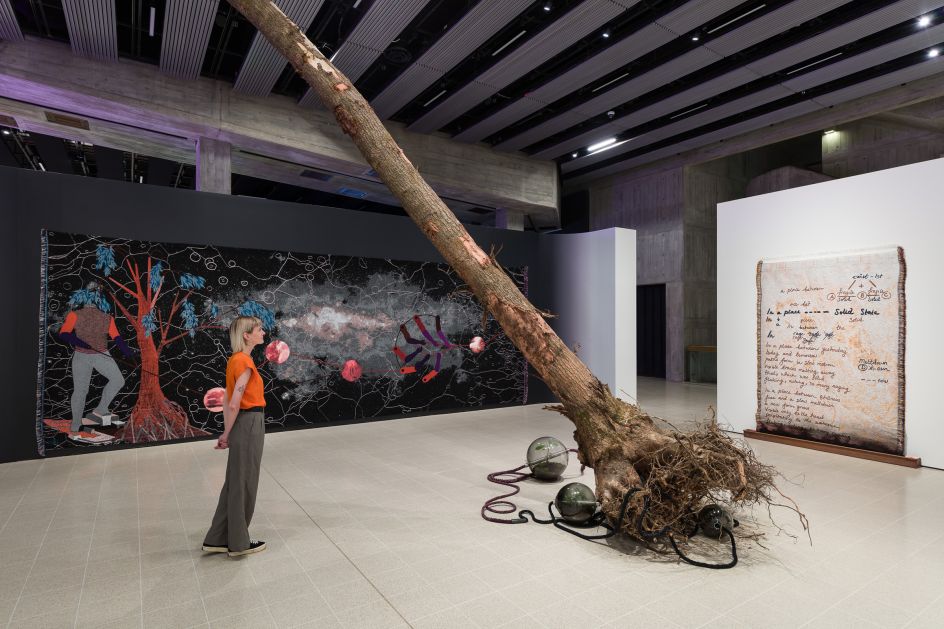
Installation view of Otobong Nkanga, Dear Earth – Art and Hope in a Time of Crisis. Photo: Mark Blower. Courtesy the Hayward Gallery
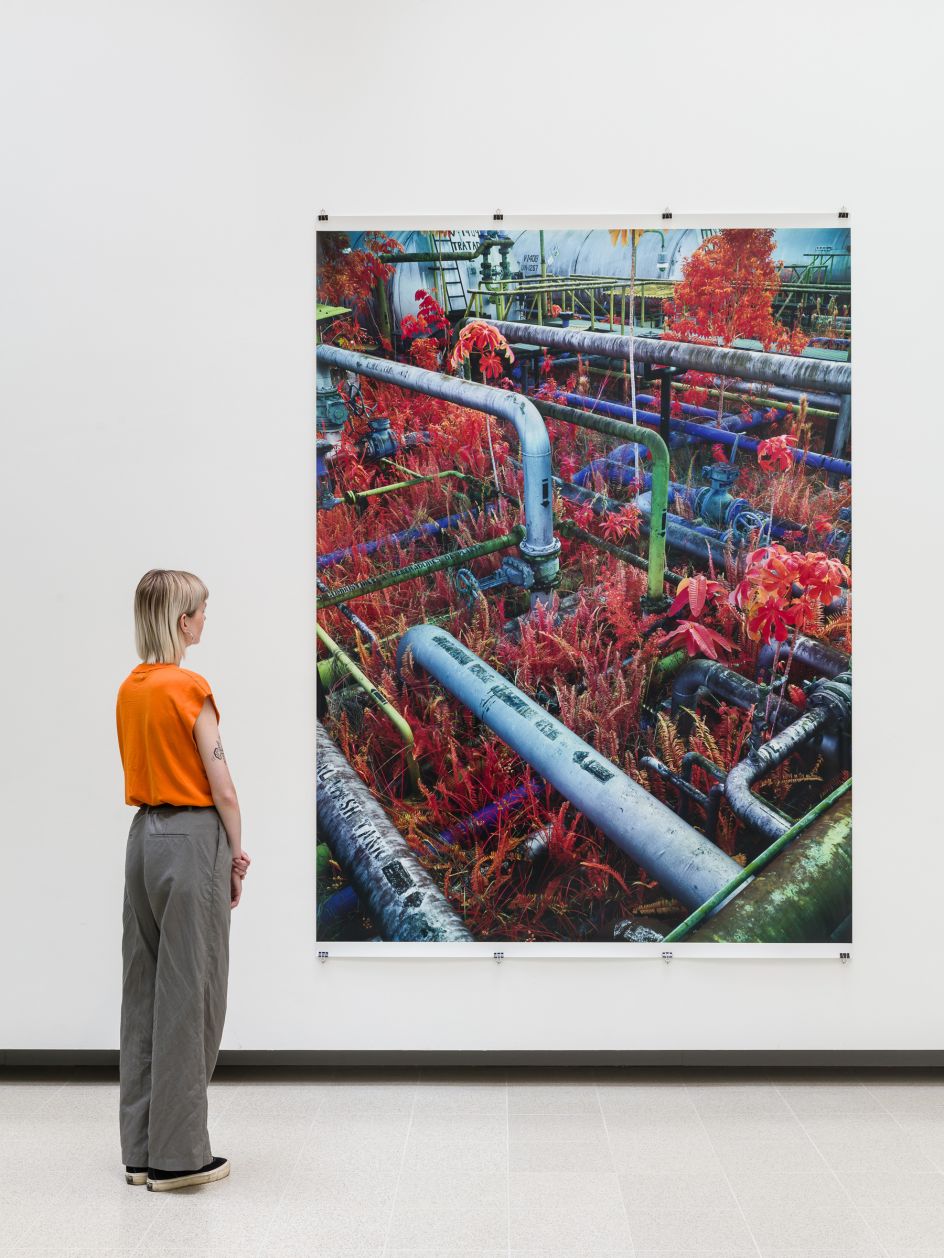
Installation view of Richard Mosse, Dear Earth – Art and Hope in a Time of Crisis. Photo: Mark Blower. Courtesy the Hayward Gallery
The Southbank Centre's summer programming has been dedicated to exploring environmental art and conversation through its Planet Summer initiative, holding workshops and activities inspired by the climate emergency. Among them, 500 students across Manchester, Birmingham and London partnered with artists, black creative facilitators, and climate experts to create zines as part of its Reframe: Inspire Schools programme.
The gallery's summer focus on the climate crisis seeks to inform audiences of the state of the planet and motivate them to support those working to change the narrative around the climate crisis.
Carrier concludes: "Like for many institutions, the climate crisis is a priority focus for the Hayward Gallery and the Southbank Centre. Addressing it through workshops, talks, and educational sessions allows the gallery to use its platform to raise awareness, educate the public, and engage in meaningful discussions around environmental issues. By prioritising this focus, we aim to contribute to positive change, inspire collective action, and promote sustainable practices for a better future."
This exhibition is only the start of a long-continuing conversation about the planet. To view the remaining Planet Summer programme and for more information on the Dear Earth exhibition, visit southbankcentre.co.uk.
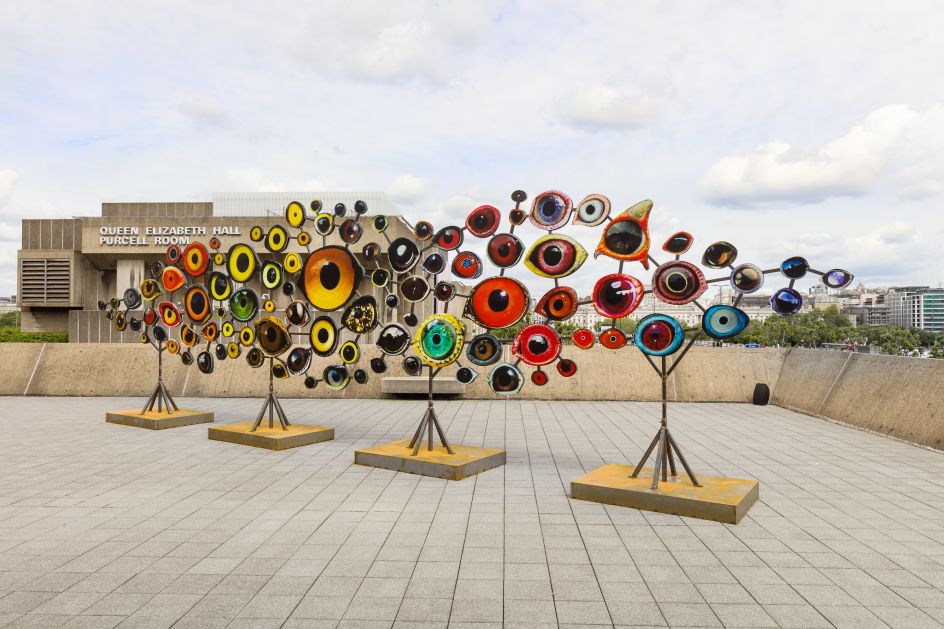
Installation view of Jenny Kendler, Dear Earth – Art and Hope in a Time of Crisis. Photo: Mark Blower. Courtesy the Hayward Gallery




 by Tüpokompanii](https://www.creativeboom.com/upload/articles/58/58684538770fb5b428dc1882f7a732f153500153_732.jpg)

 using <a href="https://www.ohnotype.co/fonts/obviously" target="_blank">Obviously</a> by Oh No Type Co., Art Director, Brand & Creative—Spotify](https://www.creativeboom.com/upload/articles/6e/6ed31eddc26fa563f213fc76d6993dab9231ffe4_732.jpg)









